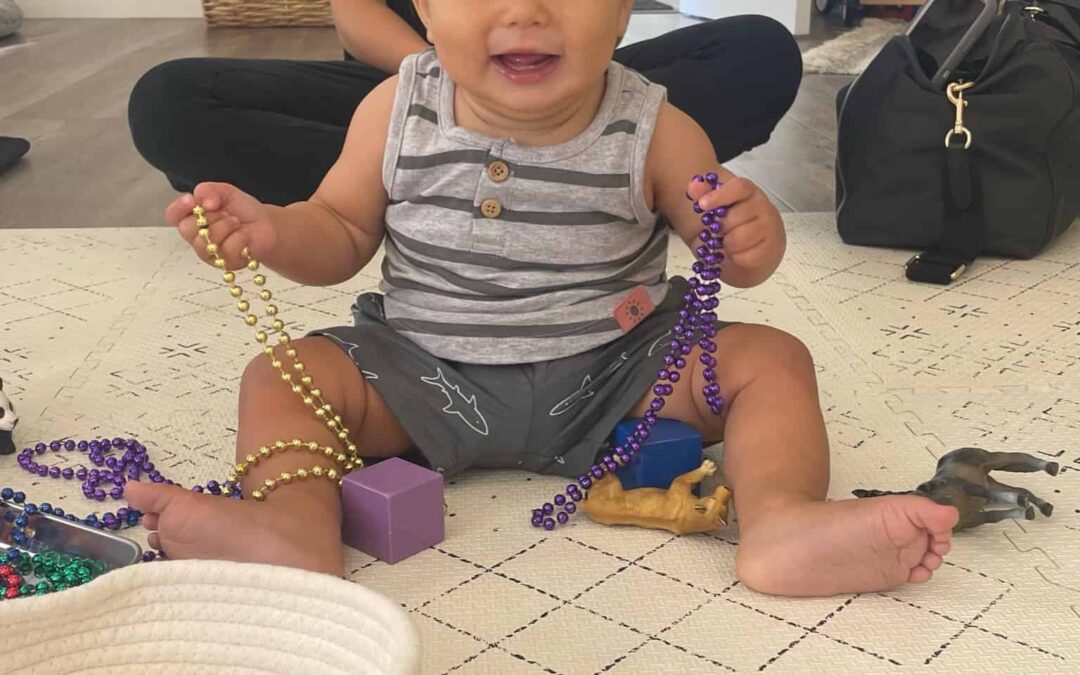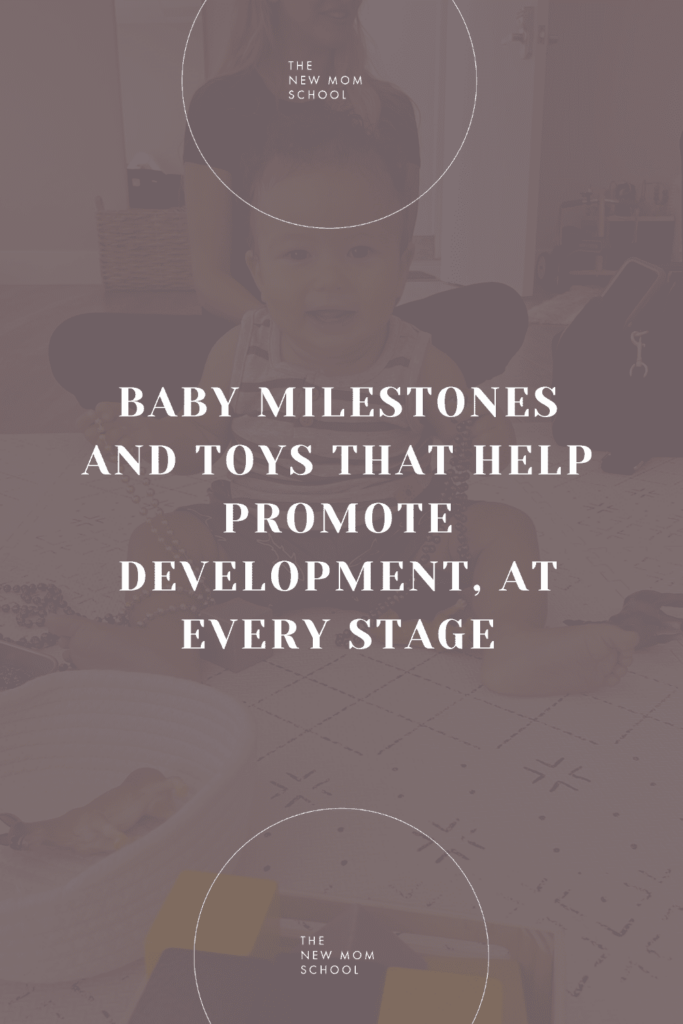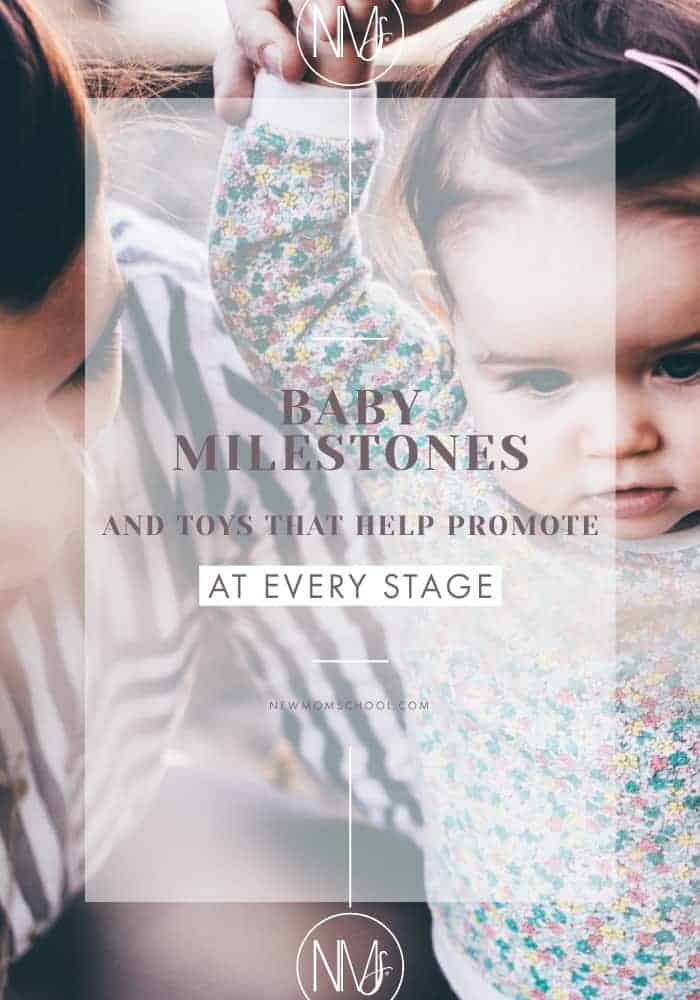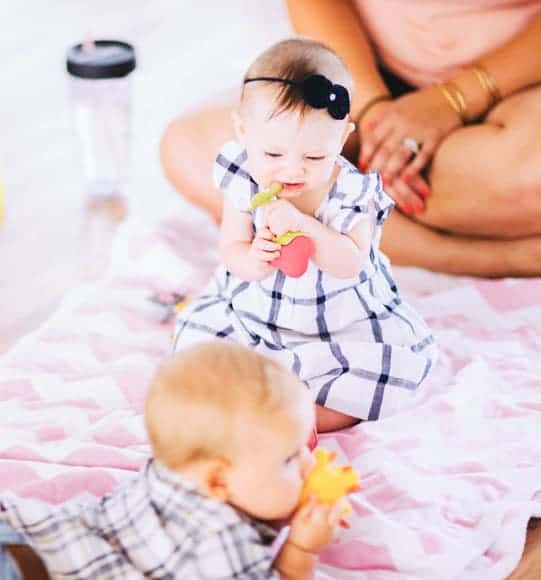Another thing that I find myself questioning is how to play with my daughter. I often assume her needs regarding stimulation and play are the same as mine, so I worry that the stacking cups and rattle toys I’ve employed lose their intrigue after time. I have to remind myself that she’s a tiny human with literally zero world perspective and cups of different sizes and colors that fit inside one another is probably earth-shattering to her developing brain. In the same train of thought, however, I question if I’m doing enough (a common theme in my motherhood journey). This subject is extremely fascinating to me, especially when there are moments when I see her staring at her hands in pure amazement. That being said, I don’t even want to try and touch the subject of developmental milestones on my own, so I’ve enlisted the incredible Liz Koren, MS, OTR/L, SWC, of Pure Peds to answer some questions, and I’ll do what I usually do – add in the “hoorah – you got this, mama,” rhetoric.
Q: What kinds of activities/toys can parents provide their 0-3 month, 6-9 month, and 10-12-month-olds to help with development?
A: 0-3 month old’s:
Focus on black and white toys, small toys to grasp, and toys that promote visual tracking
These are some of my favorites:
6-9 month old’s:
Provide toys that promote sitting or raise toys up so that the baby is looking at the toy and not at the floor. When babies are developing, wherever their eyes go, their bodies will follow, so if they are looking down when trying to sit, they will likely fall forward. At this age, we are looking to promote sitting and rotation in tummy time and seated positions, so balls, toys that roll (ie: cars), and larger toys they can hold on to are great.
(tip: prop the walker against wall so baby can sit and play without it rolling away)
10-12 month old’s:
Introduce sit to stand toys, toys they can kneel and play with, and put-in/take-out and stacking toys, like nesting blocks.
Q: When it comes to toys, how many should a baby have? Quantity vs quality?
A: My suggestion is always to have a cabinet or box of toys that parents can put away or rotate in and out. This way, your child is always seeing something “new” and learning new ways to explore with the toys they have. I think it is important to choose toys that are purposeful and not too overstimulating. I would caution parents to limit the number of toys with buttons and lights, which is hard these days.
My biggest suggestion is to limit the number of time spent in positioners (bouncers, excersaucers, walkers, jumpers, sit -me-up chairs, swings, etc). The best position for your child is on the floor exploring their natural environment and using their muscles without extra positioning aids. Get a good, foam, mat and let baby learn and investigate.
Q: Any “warning” signs parents should look out for regarding development? When should someone reach out to you for help?
A: This will always be dependent on the individual child, but here is a general list of red flags at each milestone month. I always suggest people come to see me when they first see signs of an issue because the longer you wait, the more habits and behaviors develop.
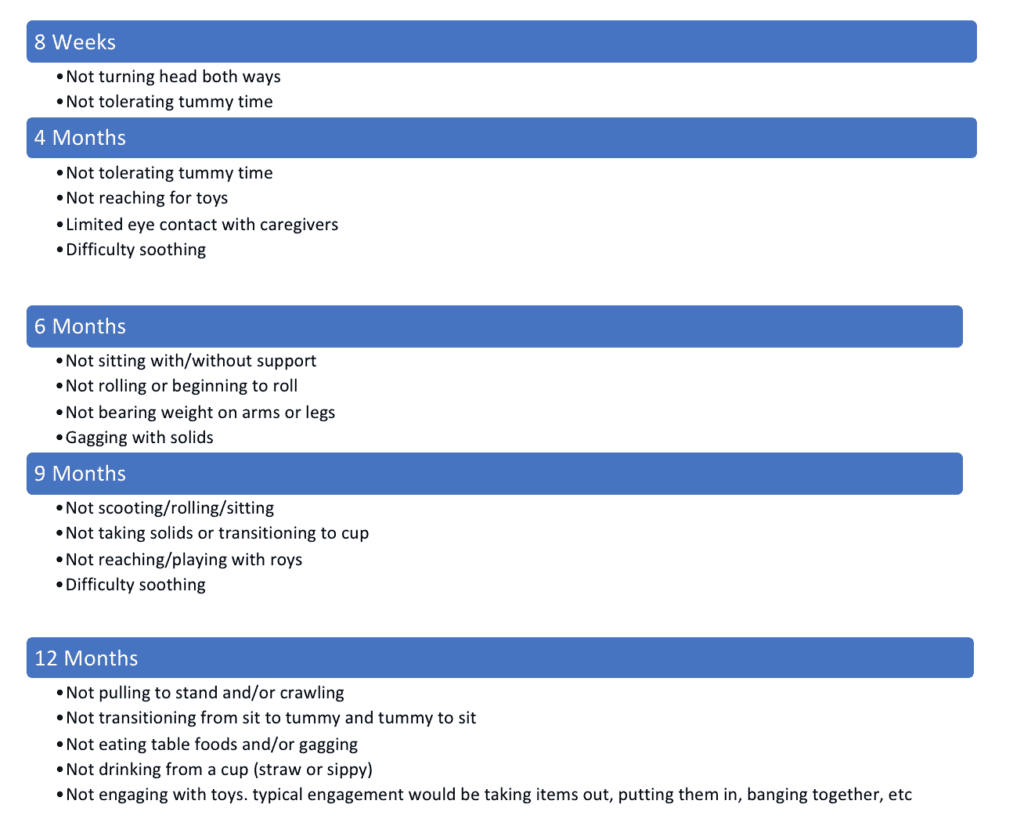
Q: Anything else you want to add or say to our new mamas?
A: Trust your mommy instincts! Don’t read too much and don’t believe everything you read. It is important to look at the author of blog posts, websites and apps and find out what the background of the author is before following the advice given.
Google is a blessing and a curse. Just type in “baby milestones,” and see how many articles pop up – both from reputable and not-so-reputable sources. This is precisely why having these trusted, professional, partners from The New Mom School is invaluable. Liz is a guest speaker in both the newborn and infant classes and I was able to learn so much from her, even in the short, 90 minutes, we were together. I’m so thankful she’s willing to share her knowledge for this post since the last thing I want to do is spread false or emotionally-charged information, especially since this tends to be a sensitive or anxiety-inducing topic for many mamas.
As with any topic relating motherhood, always remember that each child is unique, and no two children will reach milestones at the same speed. To echo Liz’s sentiment – trust your gut. You know your kiddo better than anyone, and if you think they are lagging in something related to play or development, reach out! There’s no harm in having a conversation with someone who is qualified to make an educated assessment, especially if it’s going to give you peace of mind. And if there is room for improvement? No biggie – that’s what Liz and her team are here for.
To keeping Amazon in business, one toy purchase at a time,
Melanie

